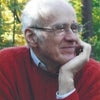What is the value of awe and mystic experience? For starters, it reduces the “me” that wants things done for it, or at least offers temporary relief from this grasping “me.” Mystic experience, whatever links it occasions, offers a kind of holiday from ordinary reality. In this expansive space, the world can be felt as less self-centered, and more inter-connected. In many spiritual traditions, this shift is called awakening, or at least the start of it. Awakening is not an entertainment (“let’s get high”) but a jewel (“let’s get real”).
We have Aldous Huxley to thank for one of the first post-war accounts of a day transformed by a psychedelic (it was mescaline). Borrowing from William Blake, he called his book The Doors of Perception (1954). What he described was things seen in a state of awe. Many other great writers have explored the phenomenon of mystical experience occasioned by what a friend of mine calls mindful molecules, and some of their work will be listed near the end of this piece, reports subsequent to Huxley’s.
These writers were interested in classic psychedelics not to alleviate or cure a health condition or reduce anxiety, much less to create a colorful internal light show, but rather to induce a state of awe Why?
They all refer to the ability of classis psychedelics to occasion mystical experience (or in a cautious phrase in a report about psilocybin, “mystical-type experience”). Professor Ralph Hood had not yet developed his mysticism scale in time for Wasson’s 1954 account of a psilocybin mushroom ceremony near Oaxaca, but the first word about the experience in Wasson’s account was, “awestruck.”
One interpretation of an experience of awe could be to reinforce a religious allegiance, whether, for example, Buddhist. Christian, Hindu, or Islamic. In each off these traditions, an allegiance has been strengthened by a mystic experience with or without the use of a mindful molecule. In this article, however, rather than get involved in theology, I want to stay with the experience occasioned by a classic psychedelic, prior to any interpretation of it.
We can all agree that the experience is radically different than ordinary reality, causing a habitual tendency to call it “sacred” and to assume it descends upon us from, or connects us with, another realm. However, Occam’s Razor suggests that we’re making a giant assumption if we assert that something very different from ordinary reality is necessarily transcendental. It might be, but it might equally represent access to a function of the human brain that is ordinarily absent or hidden.
As a rhetorical strategy, the claim of access to a realm in the bailiwick of spiritual leaders has some advantages. In the U.S. our idea of religious freedom might extend to the use of classic psychedelics. So far, this argument has succeeded only in the case of the Native American Church, which legally uses peyote in its ceremonies for hundreds of thousands of worshippers from one “race,”, and of a couple of offshoots of syncretic Brazilian churches (offshoots both located in the U.S. West).
Our courts seem to respect antiquity of practice. The native Americans have been doing their peyote ritual for a long time, and the Brazilian churches are linked to ancient shamanic practices involving ayahuasca in the Amazon basin. According to The Road to Eleusis, many of the ideas of Western civilization arose from people initiated through an annual ceremony that appears to have featured a group envisioning induced by a psychedelic agent in the kykeon and that continued for as long as two thousand years. A pause since the fourth century does not alter the antiquity of the practice.
According to the Road to Eleusis, the mysteries could be resumed now and offer benefits to our culture, as they did to the culture of ancient Greece and to initiates from the Roman empire. In a word, they could become again a part of normal life.
Now for the bibliographic note:
Appreciation for awe has appeared in a string of writings after Huxley on spiritual uses of psychedelics. Examples include:
- “Seeking the Magic Mushroom,” by R. Gordon Wasson in Life magazine (1957),
- “The New Alchemy” by Alan Watts (1960),
- “Do Drugs Have Religious Import?” by Huston Smith (1964), `
- Entheogens and the Future of Religion, edited by Robert Forte (1977 and also 2012)
- The Road to Eleusis, by Wasson, Albert Hofmann, and Carl A.P. Ruck (1978),
- a review of Walter N. Pahnke’s “Good Friday Experiment,” by Rick Doblin (1991),
- Cleansing the Doors of Perception by Huston Smith (2000),
- Zig-Zag Zen, edited by Allan Hunt Badiner (2002 and also 2015),
- Frontiers of Psychedelic Consciousness, part of a valuable series of interview books with David Jay Brown (2015)
- a series of scientific papers by Roland R. Griffiths together with colleagues (starting in 2006).
At the time of the writings cited, Wasson was a New York banker and a mycologist; Watts, a British clergyman transposed to California; Smith, a philosopher of religion and former professor at various universities including MIT; Forte, a teacher and an editor; Hofmann, a chemist at Sandoz in Basel and the discoverer of LSD; Ruck, a classicist at Boston University;; Doblin, the founder of MAPS; Badiner, a student of Buddhism and an editor; Griffiths, a professor at Johns Hopkins.
